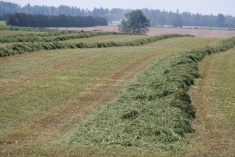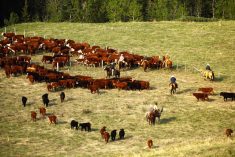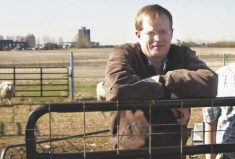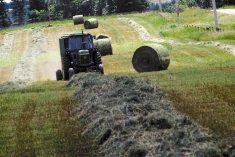Traditionally, forage stands are terminated in the fall so a good seedbed can be established and the sod root system has some time to decompose.
However, hay stands can also be terminated in the spring. Producers just need to be aware of a number of factors that can impact success.
“Spring termination of hay land will delay the seeding date two to three weeks,” said Barry Yaremcio, beef and forage specialist with the Alberta Ag-Info Centre in Stettler.
“In order for herbicide applications to be effective, sufficient plant material must be present. Grasses should be at the three- to four-leaf stage and legumes need to be actively growing to allow for good herbicide coverage. Seeding will need to be delayed three to five days after the herbicide application to allow thorough translocation into the forage plants and newly germinated weeds.”
Read Also

Horns aren’t unlocking anytime soon on livestock transport standards
Standards good enough meet the definition of “humane” animal transportation still vary widely between what what industry wants, what animal rights advocates want and, between the two, what federal regulators decide is good enough.
A number of factors influence the type of annual crop to be seeded, said Yaremcio.
“With sod seeding, the most consistent results have occurred with cereal crops such as barley or oats. The larger seed size with cereals allows seeds to be placed beneath the thatch layer into soil where good soil-to-seed contact occurs. Crop competitiveness must also be considered. Seed quality, seeding rate, seeding depth, crop height and fertilizer placement are all factors that producers need to consider.”
In many areas of the province, conservation of spring moisture is essential for crop establishment. Direct seeding into sod will retain available soil moisture that would be lost if multiple tillage operations were used to prepare a seedbed. Even with direct seeding, available soil moisture will be reduced as the forage species grows to an appropriate stage for spraying. Soil fertility must also be evaluated.
“Remember that late-seeded crops will have a shorter growing season to produce grain. In these situations, seeding a crop that can be used for silage or greenfeed offers a viable end use for these fields.”
Controlling perennial species with a glyphosate product is not as effective as fall application, said Yaremcio.
“There is a 15 to 20 per cent reduction in control when spring applied. This could be caused by the plants emerging after the application or if the thatch is thick, the herbicide does not come into contact with the new growth. It’s likely that a fall application of glyphosate pre-harvest will be required to get the level of control that’s required.”
For a fact sheet on spring termination of hay land go to agriculture.alberta.ca and search for ‘hay termination.’















